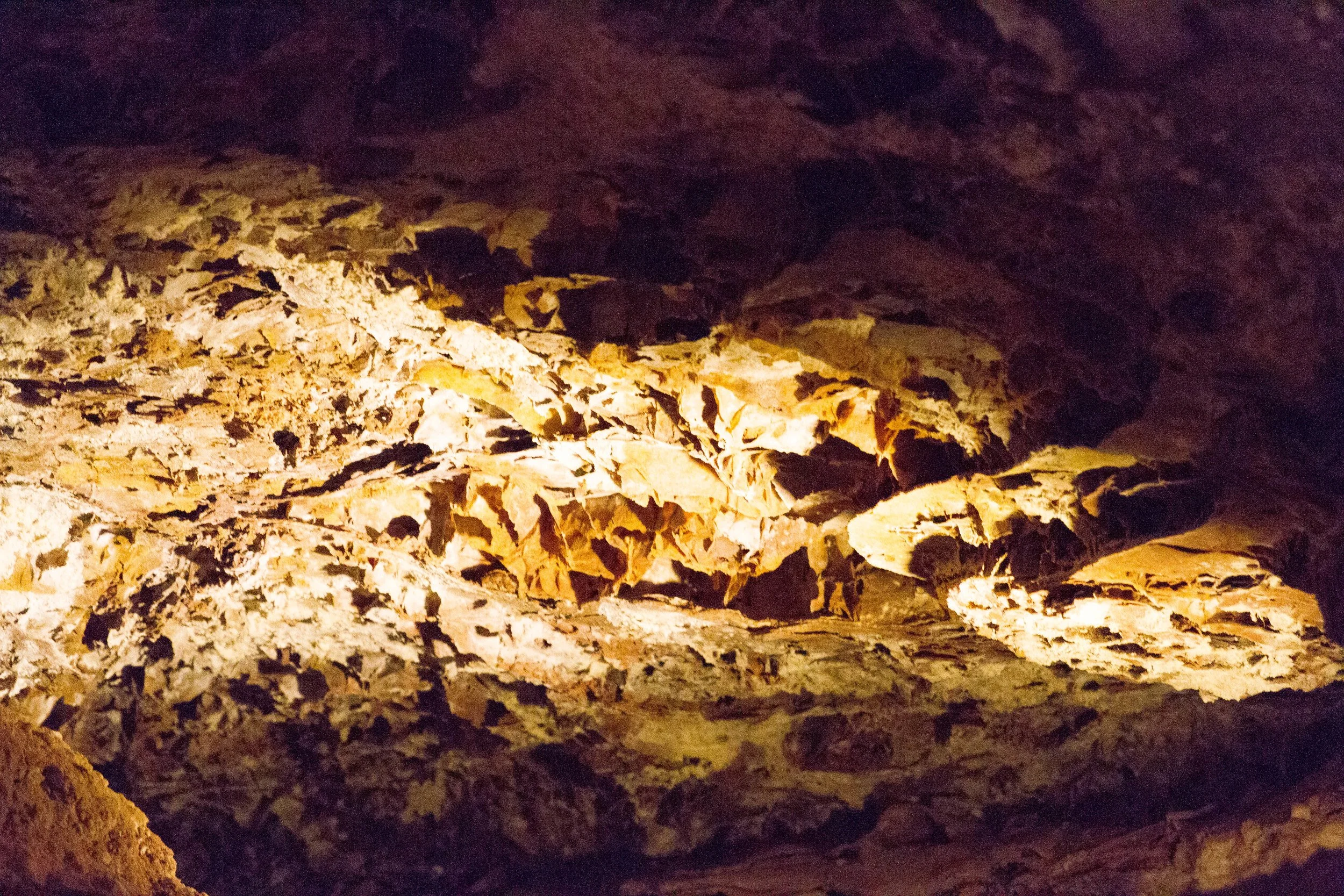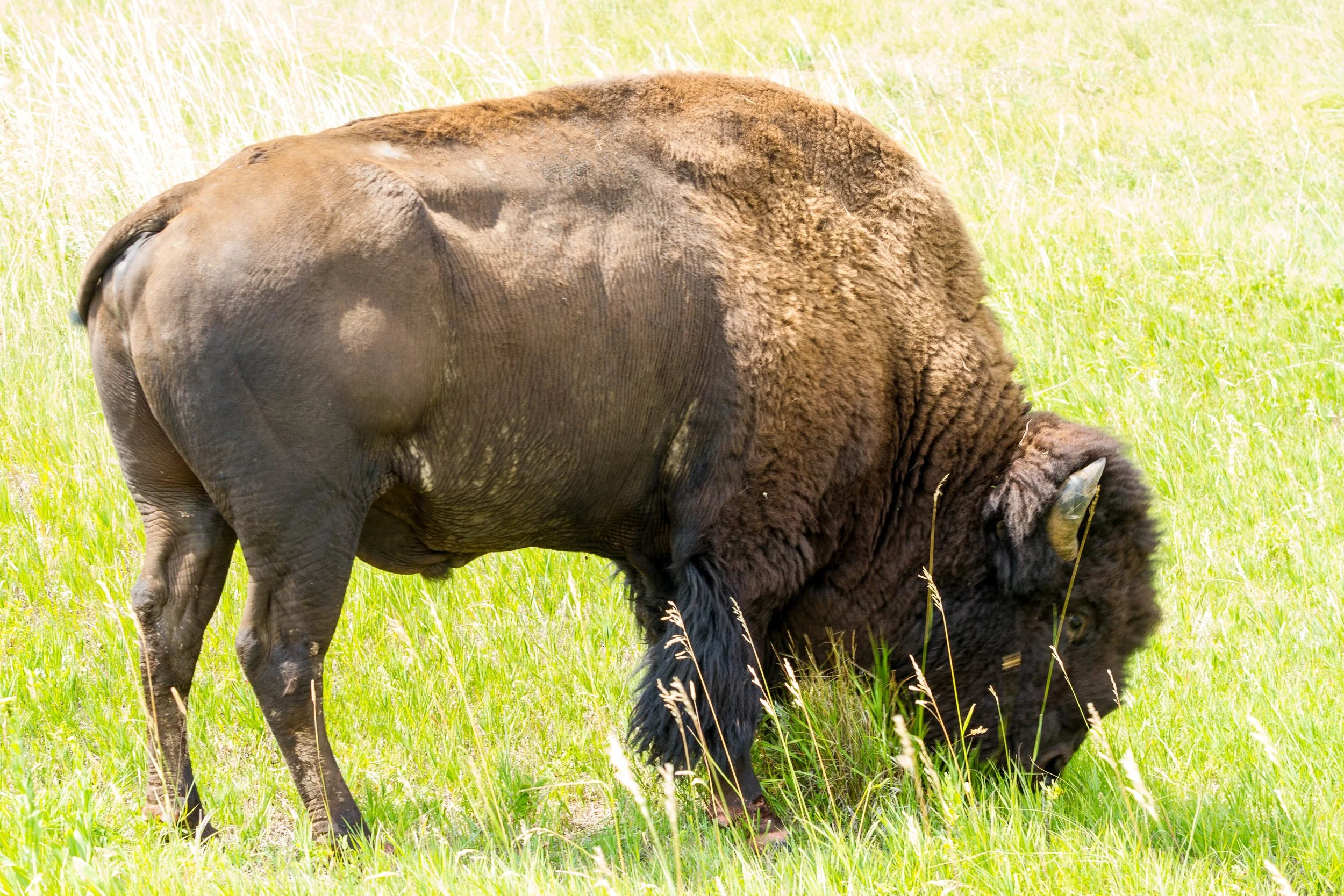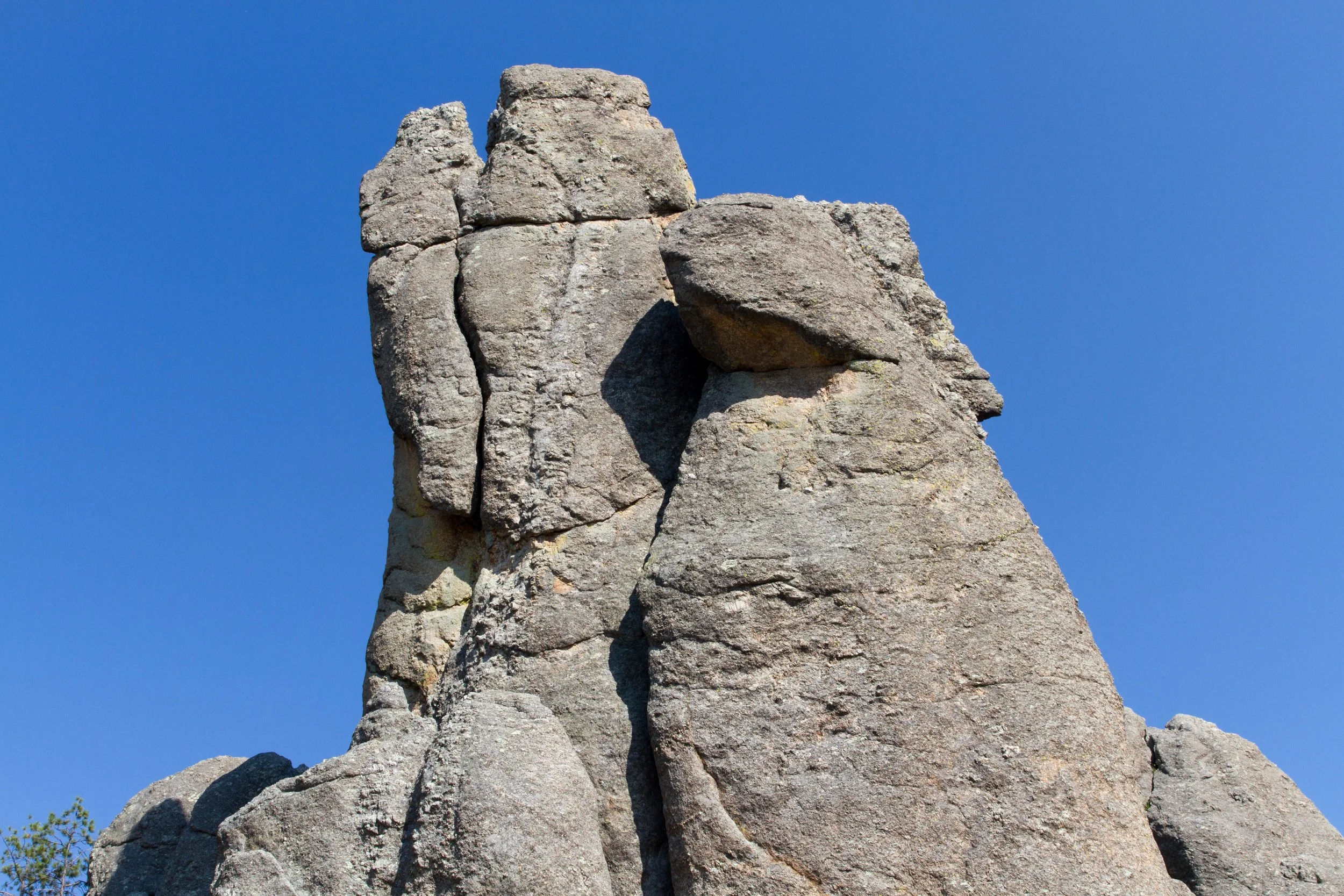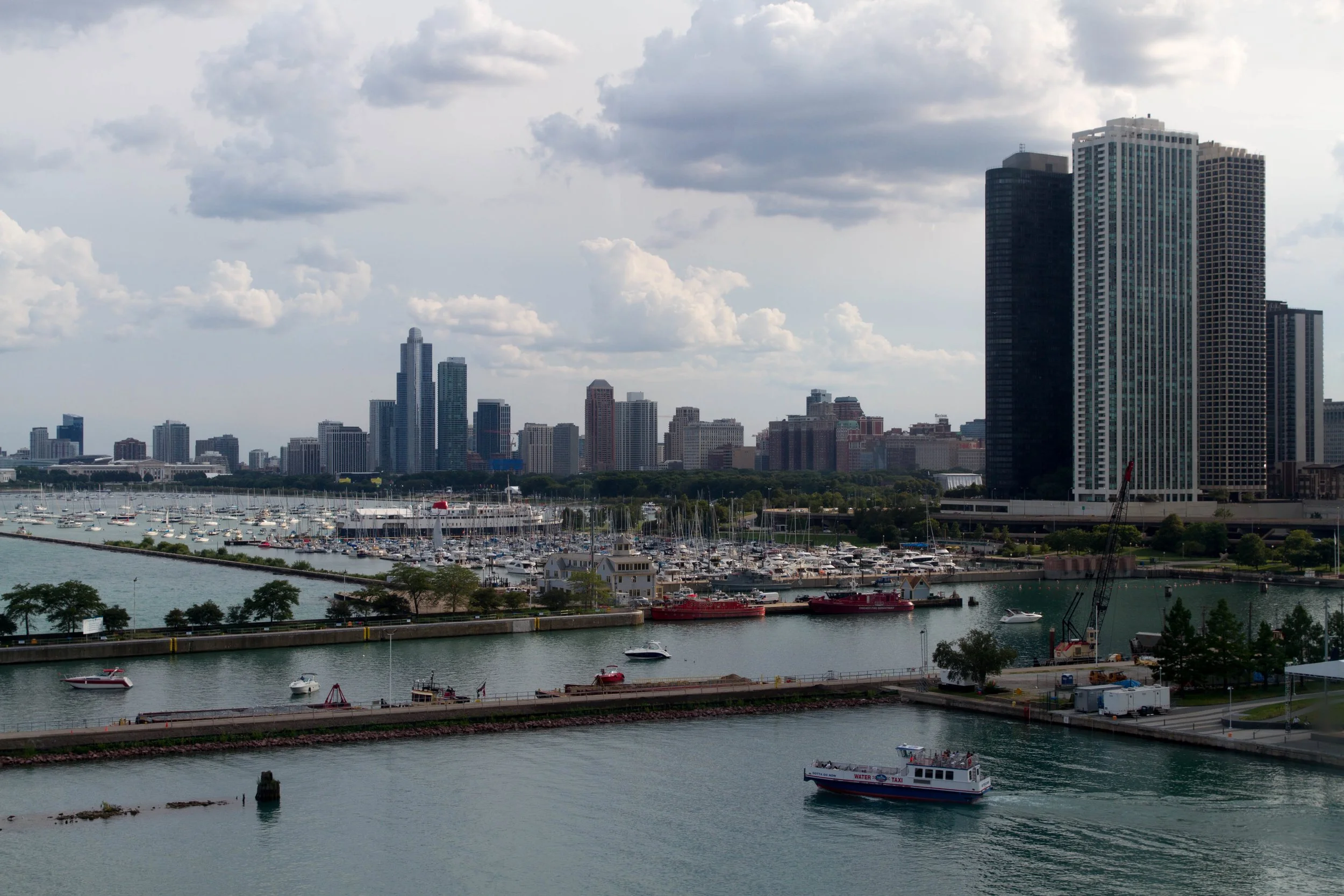South Dakota & Chicago
After a deeply moving, educational and very timely Civil Rights Tour through the Southern United States, our road trip continued with a flight to the Mount Rushmore State — South Dakota — followed by a visit to the Windy City. While South Dakota has plenty to offer visitors, our focus was on the Black Hills and Badlands, as these two areas offer a variety of experiences — stunning scenic beauty, a fascinating Native American history, and fabulous attractions. As for Chicago, it is a fun and vibrant city that I cannot wait to visit again! Below are the highlights of our visit, but first I would like to pose a question — what is the only combination of state and capital in the United States that doesn't share any letters? Read on to find the answer!
SOUTH DAKOTA
South Dakota’s department of tourism coined the phrase "The Great 8" to refer to iconic places throughout the state — Badlands National Park, Crazy Horse Memorial, Custer State Park, Historic Deadwood, Jewel Cave National Monument, Missouri River, Mount Rushmore National Memorial, and Wind Cave National Park. I am happy to report that we were able to explore five of these iconic places, as they were all conveniently located to our base in Keystone. The sights were spectacular but, if I were visiting the state again, I would choose Rapid City as our base, which is a little farther away, but makes up for the distance by being less touristy and having more shopping, restaurant and hotel options.
BADLANDS NATIONAL PARK
Badlands National Park is the largest mixed-prairie grassland in the United States. If you're like me, that particular fact may not mean much, but consider this — prairies once covered about 1/3 of the land in North America, but today most of the prairies have been altered by agriculture or development and so the Badlands — with 60 different kinds of grasses that intertwine 410 other individual plant species to create a complex ecosystem that provides habitat, food sources, and water supply to prairie animals, insects and birdlife — are vital for the wilderness ecosystems in the US! Badlands National Park was named after its badlands formations comprised of canyons, buttes, fins and pinnacles made of large deposits of sedimentary rock that have eroded over time. The largest feature in the park is known as "the Wall", a 60-mile stretch of tens-of-millions-years-old rock that acts as a barrier between the upper and lower prairies. These striking geologic deposits contain one of the world’s richest fossil beds - - ancient horses and rhinos once roamed here. Today, you can find bison, bighorn sheep, prairie dogs, and black-footed ferrets.
We chose to explore the Wall by taking a drive along the Badlands Loop State Scenic Byway that takes you through the north unit of the park. It is a roughly 39 mile road that contains numerous passes, overlooks and vistas, and access to several hiking trails. We also drove along the unpaved Sage Creek Rim Road, which has additional overlooks and a chance to see wildlife, including Roberts Prairie Dog Town, a large colony of black-tailed prairie dogs that are super cute! Along the way, we made frequent stops, took a few short hikes, and climbed a few mounds.
We had an amazing time in the park, as the scenery is truly breathtaking and the crowds (or lack thereof) were manageable. At 244,300 acres, Badlands National Park is much smaller than Grand Canyon National Park, but remarkable nonetheless. Take a look at the pictures below and let me know if you agree!
MOUNT RUSHMORE NATIONAL MEMORIAL
Mount Rushmore National Memorial is a large-scale sculpture carved into Mount Rushmore. Completed in 1941, the sculpture’s 60-foot granite faces depict U.S. presidents George Washington, Thomas Jefferson, Theodore Roosevelt, and Abraham Lincoln, surrounded by the beauty of the Black Hills of South Dakota. The memorial draws over 3 million visitors a year, so the park was crowded, but not overwhelming. We chose to visit in the late-afternoon so that we would have time to walk the Presidential Trail, which loops around the base of the mountain, complete the Junior Ranger booklet, and snap pictures along the Avenue of Flags (56 flags representing the 50 states, one district, three territories and two commonwealths of the United States) before the evening program and lighting ceremony, complete with music, narration, and a patriotic film. No matter your politics, you can appreciate the majesty of the site and the wonder of the carvings. Speaking of, here are some interesting facts regarding carving Mount Rushmore.
Ninety percent of the mountain was carved using dynamite. Only the last 3-6 inches of rock were removed by drillers using jackhammers.
The nearly 400 workers had to endure conditions that varied from blazing hot to bitterly cold and windy. Each day they climbed 700 stairs to the top of the mountain to punch-in on the time clock. Then 3/8 inch thick steel cables lowered them over the front of the 500-foot face of the mountain in a "bosun chair."
Despite the dangers, no one was killed during the project.
CRAZY HORSE MEMORIAL
Crazy Horse Memorial is a sculpture in progress of the Lakota warrior Chief Crazy Horse astride a stallion with his arm and pointed hand stretched out over the horse’s mane. The sculpture’s creation began in 1948 and is likely to take more than a century to complete, as it is funded entirely by visitor’s admission, private donations, and fundraising events, and carved by one family, essentially, the Ziolkowski’s (the father, Horczac, initially and now his widow, Ruth, and seven of their children). If and when it’s completed, the memorial will be the world’s largest sculpture — 641 feet wide and 563 feet high. For context, all four heads at Mount Rushmore would fit comfortably inside Crazy Horse’s 87-foot-tall head.
Crazy Horse was the Oglala Lakota leader who had fought in the Great Sioux War against the US government over ownership of the Black Hills. One of the most famous battles was the Battle of the Little Bighorn in southern Montana in 1876, in which Crazy Horse helped defeat US Army General George Custer and his cavalry — a battle that went down as Custer’s Last Stand.
In addition to the mountain sculpture, Crazy Horse Memorial also has a 40,000 square-foot welcome center with theaters, and is home to the Native American Educational and Cultural Center, and the Indian Museum of North America. If you are visiting the Black Hills, Crazy Horse Memorial is certainly worth a visit. We learned quite a bit about Native American history and enjoyed touring the memorial, even if we weren’t able to get very close to the sculpture. Nothing a good camera lens couldn’t overcome. See for yourself!
WIND CAVE NATIONAL PARK
The first cave in the world to be designated a national park, Wind Cave features the world’s largest concentration of boxwork, a unique formation composed of thin calcite fins resembling honeycombs. Aboveground bison, elk, and other wildlife roam the rolling prairie grasslands. Underground lies one of the world’s most complex, unusual and longest — 140 miles and counting — caves in the world. The only way to enter Wind Cave is by reserving a spot on one of the many ranger-guided tours offered by the National Park Service. We selected the 1 1/4 hour, 2/3 mile Natural Entrance Tour, described as mildly strenuous. This tour includes a visit to the natural entrance of Wind Cave to see where the cave was discovered and learn how it got its name — barometric wind at its entrance. We then entered the cave through a man-made entrance and toured the middle level, passing popcorn (clusters of small round formations), frostwork (delicate branching crystals) and the Post Office (named for the abundant boxwork on the walls). As you can imagine, capturing pictures in a cave is difficult, but I think you will get a sense for this natural wonder based on the below photos.
At the conclusion of our tour, we explored the rolling prairie grasslands via one of the two main paved roads in the park. Both offer scenic views as well as many pullouts for enjoying the beautiful scenery and wildlife, including a fun bison sighting!
CUSTER STATE PARK
Our final destination was Custer State Park, South Dakota’s first and largest state park, offering a beautiful landscape, scenic drives, wildlife and five lakes, including Sylvan Lake, known as the park’s crown jewel. During our visit to the park, we focused on the scenic drives, one of which is the 18-mile Wildlife Loop Road. While it is billed as having a 1,300 head herd of bison, bighorn sheep, pronghorn, deer, burros and numerous other animals, I will admit to being underwhelmed by the wildlife sightings (or lack thereof) — perhaps it was the time of day or because the wildlife we did see was off in the distance or because we are spoiled by the wildlife sightings in Yellowstone National Park. That said, I would still say the road, with its open grasslands and pine-covered hills, is still a lovely and must-see drive if you are visiting the park. Another must-see drive is Needles Highway. Located at the western edge of the park, Needles Highway curves and winds through 14 miles of sharp turns, pine and spruce forests, meadows surrounded by birch and aspen, and impressive granite rock formations called "needles". Needles Highway also has three narrow rock tunnels that can only fit one car or motorcycle at a time. It’s truly a spectacular drive!
CHICAGO
After a very active and fairly structured tour of many of the historic and scenic sites in Tennessee, Arkansas, Mississippi and South Dakota, I decided that we would take a less structured approach to our final stop in the U.S. — the Windy City. Of course, after reviewing all of the sights we visited, I realized that I likely fell short of my goal but, hey, Chicago is a fascinating city and I wanted to see as much as possible!
After a lengthy flight delay that included a stop in Des Moines to refuel, we were excited to check into one of our favorite boutique hotel brands, Kimpton. Not only is the Kimpton Palomar in a great part of town within walking distance to many top sights, it also represented a major upgrade from our hotel in Keystone — yay room service, nicely appointed rooms and plentiful food options! On our first day we decided to explore the city on foot — the Chicago Riverwalk (an open, pedestrian waterfront located on the south bank of the Chicago River) and Magnificent Mile (an upscale shopping district on Michigan Avenue) — as well as by boat, with the Chicago Architectural Foundation River Cruise, where volunteer tour guides interpret Chicago’s architectural heritage and history while cruising along the Chicago River. What a terrific way to experience Chicago! With our remaining time in Chicago, we criss-crossed the city and made our way to the Shed Aquarium, Millennium Park (home to Cloud Gate, also known as The Bean, a 110-ton elliptical sculpture made of stainless steel plates that reflect Chicago’s skyline), Navy Pier (where we rode on the Centennial Wheel, a 200-foot ferris wheel that is simultaneously overpriced and loads of fun), and Hyde Park, where we stopped by the Robie House, a U.S. National Historic Landmark and architect Frank Lloyd Wright’s iconic symbol of the Prairie Style, walked on the campus of University of Chicago, and took a leisurely stroll to the Chicago home of President Obama. Unfortunately, he was not in residence, but it was a treat nonetheless. Our final destination while in Hyde Park was Promontory Point. Located in Burnham Park on the shores of Lake Michigan, Promontory Point is a man-made peninsula with beautiful views of the Chicago skyline.
Last, but certainly not least, we had dinner at the home of my wonderful friend, Lauren, and her family and friends. It was great to catch up with her, enjoy delicious food and experience Chicago through her eyes. Thank you, Lauren!
I am a big fan of Chicago and cannot wait to return. That said, one of the things that I do not need to eat again is Chicago’s famous deep dish pizza — I am not a fan!
Okay, that's all for now. Stay tuned for my next and final blog that will focus on our time in London and Italy.
Oh, and the answer to my question is Pierre, South Dakota. Congratulations to anyone who figured it out!


























